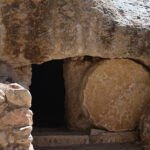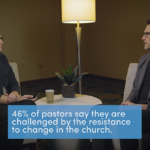
Pastors must be men of prayer, praying continually, even. Here are four tips for praying in a rural church (or any church, for that matter).
By Matt Henslee and Kyle Bueermann
Jesus’ disciples heard Him teach on all kinds of subjects.
They heard Christ teach for three years on the kingdom of God. They saw Him raise the dead and heal the sick and crippled. They witnessed Him walk on water and saw Him feed thousands of people.
With the flurry of activity the disciples observed during the three years they followed Jesus, you’d think they’d be really curious about His life and teachings. They surely had a million questions.
And yet, the writers of the Gospels only record one instance where the disciples specifically asked Jesus to teach them.
Luke 11:1 says, “He was praying in a certain place, and when he finished, one of his disciples said to him, ‘Lord, teach us to pray, just as John also taught his disciples.'”
Teach Us To Pray.
Notice the disciples didn’t ask Jesus to teach them how to take up a love offering. They didn’t ask Him to teach them how to gather a crowd. They didn’t even ask Him to pass along the power to multiply loaves and fish.
Jesus’ response to His disciples, known as The Lord’s Prayer, has become a standard prayer of liturgies and locker rooms, churches and county commissioners, preachers and politicians.
And yet, Jesus never intended the words of this prayer to serve as a magic formula to be collectively recited before feasts and football games. Rather, I think He meant it as a simple model for bringing our needs before our loving, heavenly Father.
We Must Pray.
One of the keys to revitalization—in any context—is prayer. You have no power to revitalize anything on your own, much less the ability to see God’s glory reclaimed in a church located in the middle of nowhere.
One of the keys to revitalization (in any context) is prayer. You have no power to revitalize anything on your own, much less the ability to see God's glory reclaimed in a church located in the middle of nowhere. Click To TweetWe must pray and “pray constantly,” as Paul instructs in 1 Thessalonians 5:17. If you want to serve your church well as pastor, you must be the kind of church leader who models prayer.
This doesn’t mean you have to spend hours with your head bowed and eyes closed. It does mean, however, you’ll spend a lot of time conversing with God’s people and conversing with God about His people.
As you pray, here are four tips for praying in a rural church (or any church, for that matter).
1. Pray through your membership list.
Make this a priority in your ministry. Brian Croft, senior pastor of Auburndale Baptist Church in Louisville, Kentucky, recommends systematically praying through your church membership list at least once a month. If you’re in a normative-size church, this should be easily doable.
Then, let your folks know you’re praying for them. Send them a note, a text message, an email, or call them to remind them they’re on your mind.
2. Gather often for prayer.
Prayer should certainly have a place in your weekly worship service and in your small groups and other Bible studies. But what would it look like to simply gather together once a month for no other purpose than to pray?
You might only have a couple of people show up for this meeting, but that’s OK. Spend time praying for your church, your community, your country, and other spheres of life.
At our church’s monthly prayer gathering on the first Sunday evening of each month, we pray through a passage of Scripture and then canvas our sanctuary in prayer.
We pray for the spots where we know people usually sit, and we pray for the spots where we know no one sits. There are often only three or four of us who show up for such gatherings, but we’ve made it a priority to gather for no other purpose than to pray.
3. Pray through Scripture.
Dr. Donald Whitney, professor of biblical spirituality at The Southern Baptist Theological Seminary, has written a phenomenal little book titled, Praying the Bible. We highly recommend it as a way to systematically spend time in personal prayer with God’s Word.
4. Incorporate meaningful prayer into your worship service.
If the only time you pray in your service is as a “transition,” you’re communicating something about prayer.
In our service, we pray during our announcement time, at the end of the musical worship, after I read the main text for the sermon, at the end of the sermon, before we take up the offering, and after the offering has been received.
Take a look at your worship service outline and see how you can pray more purposefully—not just to fill time between parts of the service.
Bonus: Jesus Take the Wheel.
Finally, a bonus: If you’re in a rural context, you’ll probably spend a lot of time behind a literal wheel. For me (Matt), it takes an hour to drive to the nearest Walmart or hospital and over two-and-a-half hours to get to popular fast food restaurants.
When you’re behind the wheel, spend that time in prayer. Don’t close your eyes of course, but pray over your membership roll, pray through your upcoming text from Scripture, and pray for the people who live in the scattered houses you pass by.
The investment you make into your prayer life will be more impactful for you and your church than you’ll ever know.
Adapted with permission from Replanting Rural Churches. Copyright 2019, Acoma Press.

Matt Henslee
Matt and his wife Rebecca have four daughters. He is the lead pastor of Plymouth Park Baptist Church in Irving, Texas and coauthor of Replanting Rural Churches.

Kyle Bueermann
Kyle co-authored Replanting Rural Churches and is the pastor of First Baptist Church of Alamogordo, New Mexico, director of replanter development for the North American Mission Board, and co-host of Not Another Baptist Podcast.











